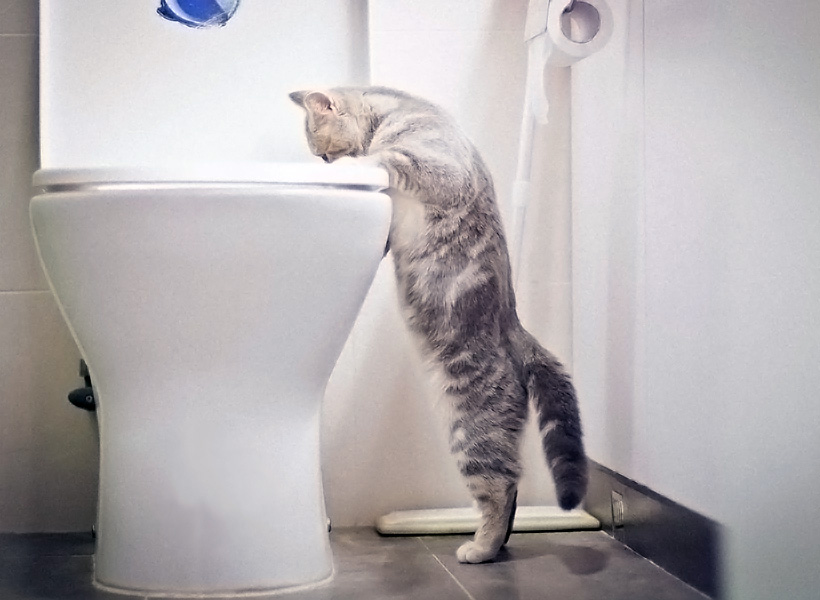In this article in the next paragraph you will discover lots of amazing points relating to Don’t flush cat feces down the toilet.

Intro
As feline proprietors, it's necessary to be mindful of just how we throw away our feline friends' waste. While it may seem practical to flush feline poop down the commode, this method can have damaging repercussions for both the atmosphere and human health.
Alternatives to Flushing
Thankfully, there are safer and much more responsible methods to get rid of cat poop. Consider the complying with options:
1. Scoop and Dispose in Trash
One of the most usual method of disposing of feline poop is to scoop it right into a biodegradable bag and throw it in the trash. Be sure to use a devoted trash scoop and get rid of the waste promptly.
2. Use Biodegradable Litter
Go with naturally degradable cat trash made from materials such as corn or wheat. These litters are environmentally friendly and can be safely taken care of in the garbage.
3. Bury in the Yard
If you have a yard, take into consideration burying pet cat waste in an assigned location far from veggie yards and water sources. Make certain to dig deep enough to avoid contamination of groundwater.
4. Mount a Pet Waste Disposal System
Buy a pet dog garbage disposal system particularly developed for feline waste. These systems utilize enzymes to break down the waste, minimizing smell and ecological impact.
Health Risks
In addition to ecological worries, purging cat waste can additionally position health and wellness dangers to human beings. Feline feces may consist of Toxoplasma gondii, a bloodsucker that can cause toxoplasmosis-- a potentially serious ailment, particularly for pregnant women and individuals with damaged body immune systems.
Ecological Impact
Purging cat poop presents unsafe pathogens and bloodsuckers right into the water system, positioning a significant threat to marine communities. These pollutants can adversely affect marine life and compromise water high quality.
Final thought
Liable family pet ownership extends past providing food and sanctuary-- it additionally includes correct waste management. By refraining from flushing feline poop down the bathroom and selecting alternate disposal techniques, we can decrease our environmental impact and shield human health and wellness.
Why Can’t I Flush Cat Poop?
It Spreads a Parasite
Cats are frequently infected with a parasite called toxoplasma gondii. The parasite causes an infection called toxoplasmosis. It is usually harmless to cats. The parasite only uses cat poop as a host for its eggs. Otherwise, the cat’s immune system usually keeps the infection at low enough levels to maintain its own health. But it does not stop the develop of eggs. These eggs are tiny and surprisingly tough. They may survive for a year before they begin to grow. But that’s the problem.
Our wastewater system is not designed to deal with toxoplasmosis eggs. Instead, most eggs will flush from your toilet into sewers and wastewater management plants. After the sewage is treated for many other harmful things in it, it is typically released into local rivers, lakes, or oceans. Here, the toxoplasmosis eggs can find new hosts, including starfish, crabs, otters, and many other wildlife. For many, this is a significant risk to their health. Toxoplasmosis can also end up infecting water sources that are important for agriculture, which means our deer, pigs, and sheep can get infected too.
Is There Risk to Humans?
There can be a risk to human life from flushing cat poop down the toilet. If you do so, the parasites from your cat’s poop can end up in shellfish, game animals, or livestock. If this meat is then served raw or undercooked, the people who eat it can get sick.
In fact, according to the CDC, 40 million people in the United States are infected with toxoplasma gondii. They get it from exposure to infected seafood, or from some kind of cat poop contamination, like drinking from a stream that is contaminated or touching anything that has come into contact with cat poop. That includes just cleaning a cat litter box.
Most people who get infected with these parasites will not develop any symptoms. However, for pregnant women or for those with compromised immune systems, the parasite can cause severe health problems.
How to Handle Cat Poop
The best way to handle cat poop is actually to clean the box more often. The eggs that the parasite sheds will not become active until one to five days after the cat poops. That means that if you clean daily, you’re much less likely to come into direct contact with infectious eggs.
That said, always dispose of cat poop in the garbage and not down the toilet. Wash your hands before and after you clean the litter box, and bring the bag of poop right outside to your garbage bins.
https://trenchlesssolutionsusa.com/why-cant-i-flush-cat-poop/

We hope you enjoyed our article about How to Dispose of Cat Poop and Litter Without Plastic Bags. Thanks a lot for spending some time to browse our post. Sharing is nice. You just don't know, you might be doing someone a favor. Thank you for your time. Don't hesitate to visit our website back soon.
Schedule And Pricing
Comments on “Never Flush Cat Poop Down Your Toilet - Safeguard Your Pipes System”